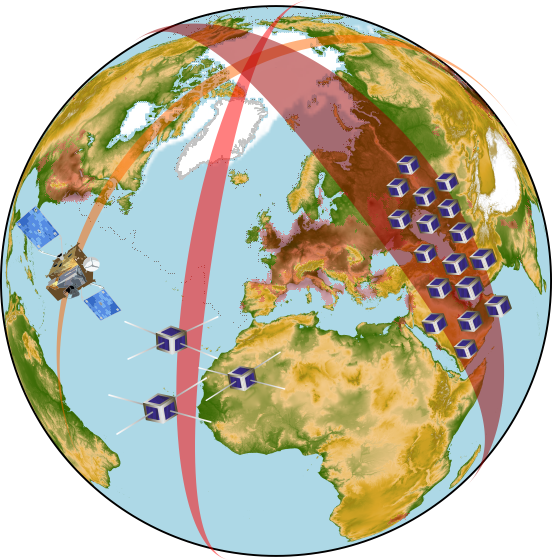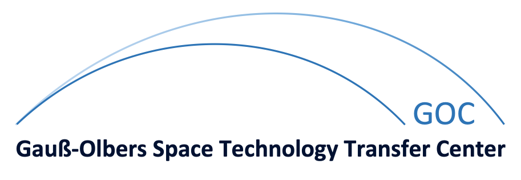Communications for Satellite Constellations
Motivation
Currently the aerospace industry is changing politically, economically and technologically. Whereas technology development, mission planning or the operation of space missions was originally initiated and dominated by the state, space access and orbital applications will be organized in a much more private-economical way in future, characterized by completely new technological approaches, applications and business models.
5GNewSpace
One key technology of this so-called NewSpace are cheap and highly available small satellites, which can perform specific tasks for a wide variety of applications cooperatively in larger scalable constellations or swarms like a large system distributed in space.
Advancing Earth Observation Science (AEOS)
The environmental conditions on Earth are determined by a complex system of physical, chemical, and biological processes. Human activity has now a significant impact on the environment and climate change, although the type of impact and its strength are the subject of controversial debate. An overarching aim of the research initiative Advancing Earth Observation Science (AEOS) is therefore to distinguish between the impacts of natural processes and those attributable to human activity, and to quantify them. This requires global knowledge about Earth system processes inferred from data delivered by Earth observation satellite instrumentation. Such knowledge is indispensable for improving the predictions of environmental and climate change.
|
Compared to the operational and the planned planned satellites that are due to be launched in the next few years greatly improved Earth observation data with higher spatial and temporal resolution and better coverage is required. Such data can be provided by swarms of CubeSats. Consequently, the development of technology required for the use of CubeSat swarms in Earth observation is forseen. This necessitates research on miniaturised sensors, electronics for space and swarm-based measurement methods. The goal is to develop and fly a swarm mission with CubeSats as a proof of concept demonstrator for future Earth observation. |
 |
For further information see: http://www.iup.uni-bremen.de/deu/forschung/neue-initiative---advancing-earth-observation-scie/index.html
Details
Publications
-
Implementation of a HDL-Coder based Telecommand Receiver Application for Microsatellite Communication
BibTEX

C. Willuweit, D. Wübben, Jan Budroweit, Ferdinand Stehle
2018 6th IEEE Global Conference on Signal and Information Processing, Anaheim, CA, USA, 26. - 29. November 2018, DOI -
5G-NewSpace
BibTEX

A. Dekorsy, F. Bittner, D. Wübben
ITG News, pp. 4-5, Germany, October 2018
Involved Staff
- A. Dekorsy
- D. Wübben
- F. Bittner







